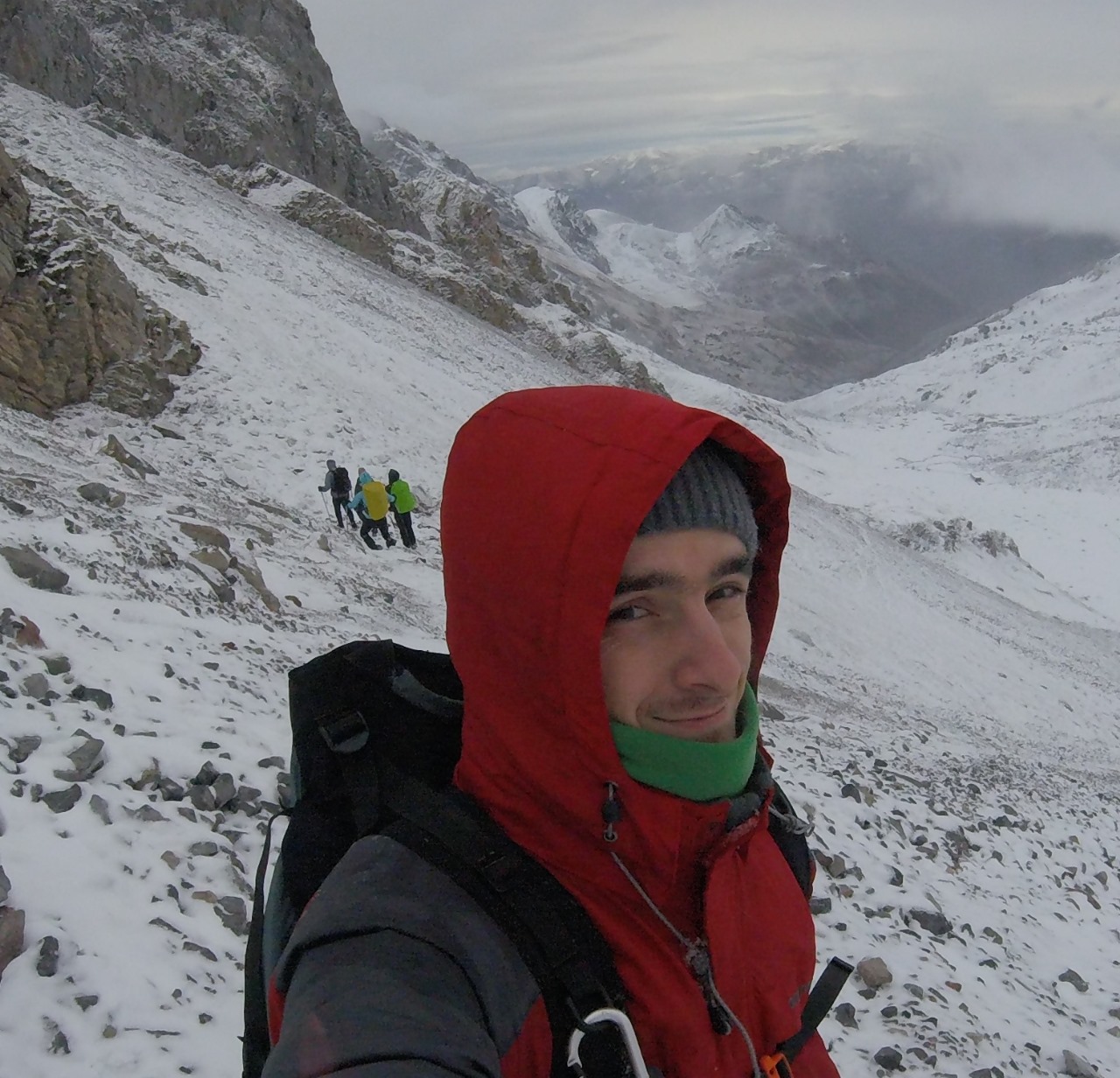Sergey S. Ogurtsov
Associate Editor of the journal “Nature Conservation Research”

Academic degree, title, position: PhD (in Biology). Leading Researcher of the Central Forest State Nature Biosphere Reserve, Researcher of the A.N. Severtsov Institute of Ecology and Evolution of the RAS.
Awards, membership in societies and editorial boards of journals: Member of the International Association for Bear Research and Management.
Research interests: brown bear, theriology (large carnivores), mammal ecology, ecological modeling (HSM, SDM, ENM, RSF), remote methods of animal investigations (GIS, remote sensing, GPS-telemetry, UAV, camera traps).
Scientometric indicators: Web of Science (h=3, Documents by author: 16, Total citations: 44); Scopus (h=4, Documents by author: 15, Total citations: 49); Russian Index of Science Citation (RISC) (h=7, Documents by author: 52, Total citations: 183).
Publication activity: Sergey S. Ogurtsov is author of more than 60 publications, including about 22 articles in peer reviewed journals; he is an author (or co-author) of 2 monographs, 1 teaching aid.
Web-pages: ResearchGate, Scopus, Russian Index of Science Citation (RISC).
Selected publications
- Ogurtsov S.S., Khapugin A.A., Zheltukhin A.S., Fedoseeva E.B., Antropov A.V., Delgado M.d.M., Penteriani V. 2023. Brown bear food habits in natural and human-modified landscapes in West-European Russia. Ursus 34(11): 1–19. DOI: 10.2192/URSUS-D-22-00007
- Ogurtsov S.S. 2023. Absence of “Absences": The Engler–Hengl Approach in Species Distribution Modeling. Biology Bulletin 50(Suppl. 2): S22–S37. DOI: 10.1134/S1062359023605311
- Ogurtsov S.S., Zheltukhin A.S. 2023. Evaluation of the influence of human activity on the spatiotemporal distribution patterns of large carnivores using camera traps in the Central Forest Nature Reserve. Zoologicheskii Zhurnal 102(11): 1301–1318. DOI: 10.31857/S0044513423100070. [In Russian]
- Ogurtsov S.S. 2023. Estimating brown bear population density and abundance using camera traps in the Central Forest State Nature Reserve (West of European Russia). Nature Conservation Research 8(2): 1–21. DOI: 10.24189/ncr.2023.008. [In Russian]
- Ogurtsov S.S. 2023. Mammal population density estimation using camera traps based on a random encounter model: theoretical basis and practical recommendations. Nature Conservation Research 8(1): 1–23. DOI: 10.24189/ncr.2023.007. [In Russian]
- Seryodkin I.V., Ogurtsov S.S., Yamazaki K., Goto Y., Miquelle D. Cannibalism by Asiatic black bear (Ursus thibetanus) in the Sikhote-Alin (Russian Far East). The Bulletin of Irkutsk State University. Series Biology. Ecology 42: 99-104. DOI: 10.26516/2073-3372.2022.42.99. [In Russian]
- Ogurtsov S.S., Zheltukhin A.S. 2022. Brown bear hunting for moose in the southern taiga: results of long-term camera trap monitoring. Russian Journal of Ecosystem Ecology 7(4). DOI: 10.21685/2500-0578-2022-4-2. [In Russian]
- Ogurtsov S.S., Khapugin A.A., Zheltukhin A.S., Fedoseeva E.B., Antropov A.V., Delgado M.M., Penteriani V. 2022. Brown bear food-probability models in West-European Russia: on the way to the real resource selection function. Forests 13(8): 1247. DOI: 10.3390/f13081247
- Ogurtsov S.S., Mikhalap S.G. 2021. Ecological niche and habitat suitability modeling of two species of forest voles in the southern taiga. Russian Journal of Ecosystem Ecology 6(1). DOI: 10.21685/2500-0578-2021-1-4. [In Russian]
- Ogurtsov S.S. 2020. Brown bear (Ursus arctos) ecological niche and habitat suitability modeling in the southern taiga subzone using the method of GNESFA. Nature Conservation Research 5(3): 86–113. DOI: 10.24189/ncr.2020.034. [In Russian]
- Ogurtsov S.S., Zheltukhina Yu.S. 2020. Dwarf shrub berries in the diet of the brown bear (Ursus arctos) in southern taiga: example of the Central Forest Strict Nature Reserve. Proceedings of Karelian Scientific Centre of RAS 5: 29–43. DOI: 10.17076/eco1197. [In Russian]
- Ogurtsov S.S. 2019. Brown bear (Ursus arctos) habitat suitability and distribution modelling in the southern taiga subzone using the method of maximum entropy. Nature Conservation Research 4(4): 34–64. DOI: 10.24189/ncr.2019.061. [In Russian]
- Ogurtsov S.S. 2019. Review of the software for processing and analysis of data from camera traps: latest news, working with video and GIS. Nature Conservation Research 4(2): 95–124. DOI: 10.24189/ncr.2019.019. [In Russian]
- Ogurtsov S.S., Zheltukhin A.S., Puzachenko Y.G. 2018. Results of the long-term study of the brown bear ecological niche in the West of European Russia. 26th International conference on Bear Research and Management. Majić Skrbinšek A (Ed.), 16-21 September, Ljubljana, Slovenia. P. 112.
- Ogurtsov S.S., Zheltukhin A.S., Kotlov I.P. 2018. Daily activity patterns of large and medium-sized mammals based on camera traps data in the Central Forest Nature Reserve, Valdai Upland, Russia. Nature Conservation Research 3(2): 68–88. DOI: 10.24189/ncr.2018.031
- Ogurtsov S.S. 2018. The diet of the brown bear (Ursus arctos) in the Central Forest Nature Reserve (West-European Russia), based on scat analysis data. Biology Bulletin 45(9): 1039–1054. DOI: 10.1134/S1062359018090145
- Ogurtsov S.S., Volkov V.P., Zheltukhin A.S. 2017. Review of some actual methods of storage, processing and analysis of data from camera traps in zoological research. Nature Conservation Research 2(1): 73–98. DOI: 10.24189/ncr.2017.057 [In Russian]
- Ogurtsov S.S., Makarova O.A., Polikarpova N.V., Kopatz A., Eiken H.G., Hagen S.B. 2017. The results of the study of the brown bear population in the Russian part of the Pasvik-Inari Trilateral Park according to DNA analysis and data from camera traps. Proceedings of Karelian Scientific Centre of RAS 9: 58–72. [In Russian]
- Ogurtsov S.S., Zheltukhin A.S. 2017. Application of camera traps to the study of a brown bear (Ursus arctos) population in the Central Forest Nature Reserve. Zoologicheskii Zhurnal 96(3): 360–372. [In Russian]
- Ogurtsov S.S. 2015. Quantitative characteristics of the brown bear (Ursus arctos L.) feeding by Umbelliferae plants. Scientific Reports of the Kazan University. Natures science 157(1): 114–126. [In Russian]